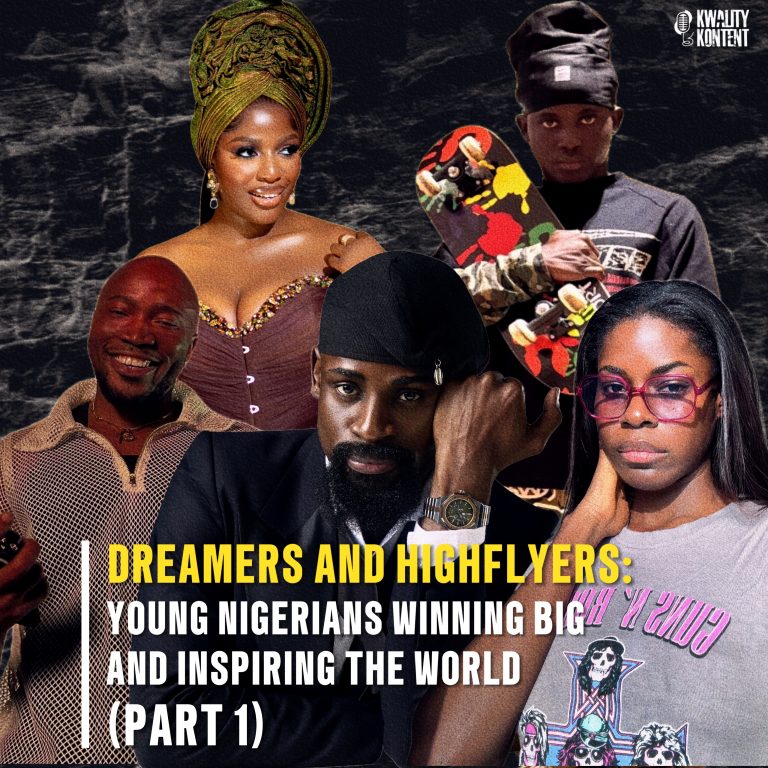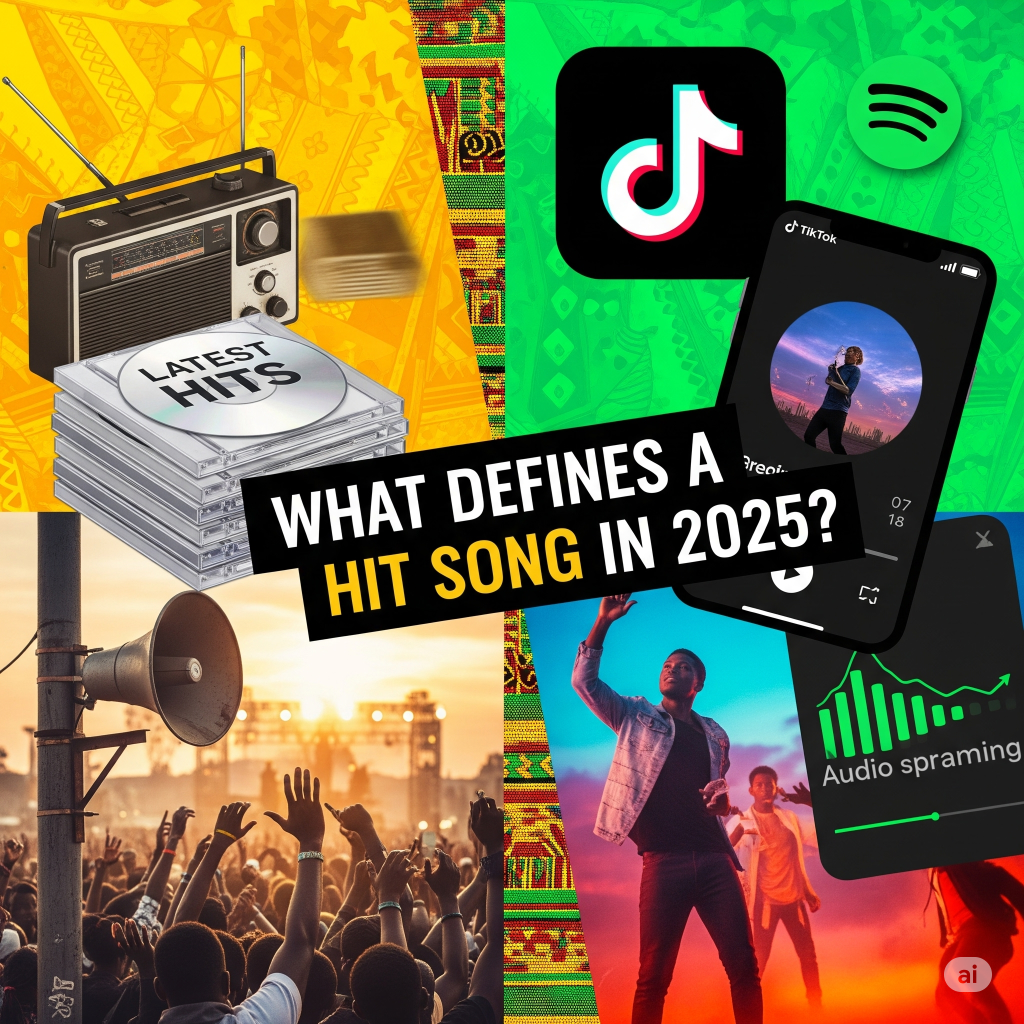
A few weeks ago, a section of Nigerian music Twitter busied itself with arguments centered around who had more hit songs between Nigerian stars Bnxn and Seyi Vibez. The biggest takeaway from the conversation -for this writer- was how a lot of the participants in the argument touted popular records as hits.
There are popular records and there are hit songs. Not all popular songs are hits, but every hit song is a popular record. A lot of records branded as hit songs these days fail to tick some of the boxes that certify a song as a hit. Which leads to the bigger conversation about what even qualifies as a hit in 2025.
The general consensus is that the definition of a hit song has changed over the years. In the past, record sales, radio plays, chart success, and most importantly, cultural impact were the metrics used to determine the hit status of a song. These days, social media and digital streaming platforms have changed how the status of a song can be measured. It’s even more difficult when you consider the fast-paced and fragmented nature of today’s music landscape.
While the old metrics—chart position, radio airplays, and streaming numbers—still matter in determining the status of a record, defining a hit record in today’s music landscape is not as straightforward as it used to be. In 2025, a song can go viral on TikTok, dominate playlists across streaming platforms, and be perceived to be a hit in some circles but fail to make a dent on the mass market. This poses the question: what’s the definition of a hit song in 2025?
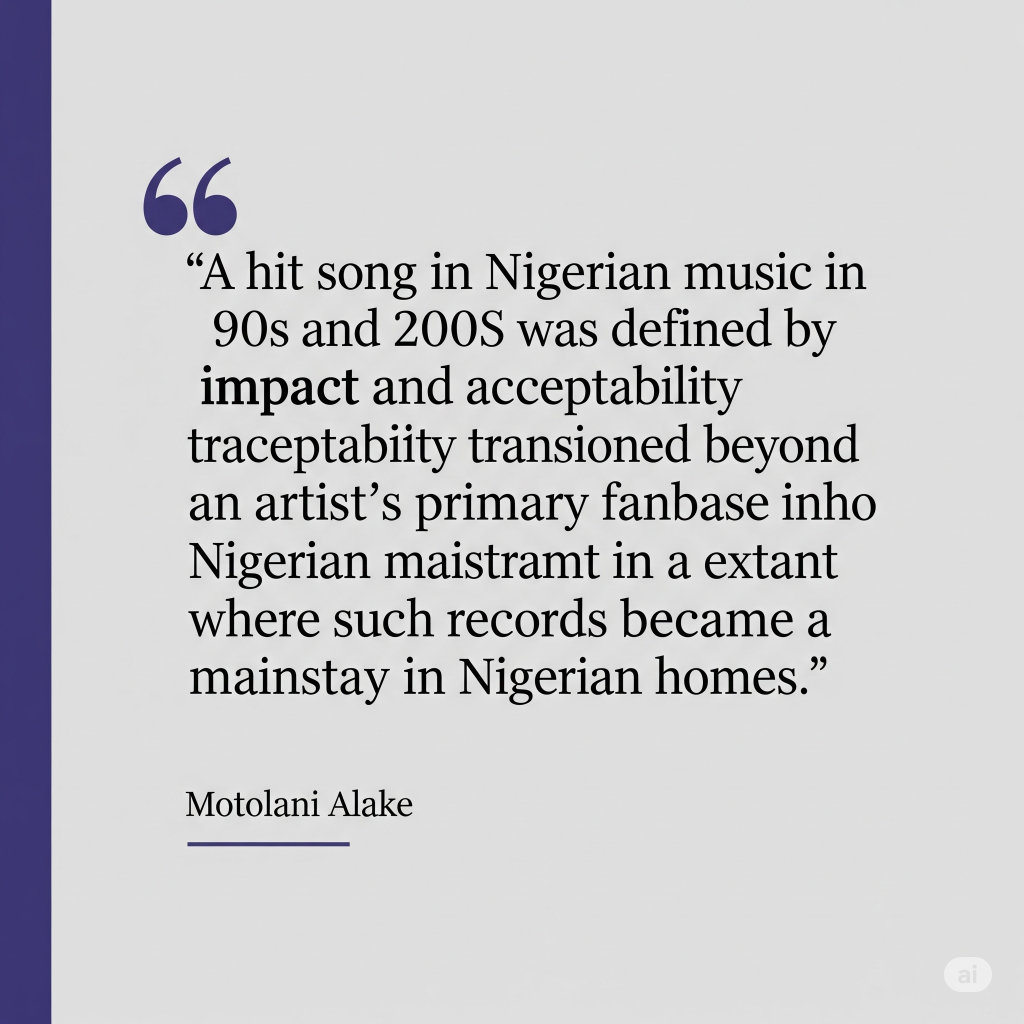
Claire Gehlich, in her January 2025 editorial piece for Melodic Magazine, revealed that in the past, “A song was typically considered a hit if it placed in the Top 40 of the Billboard Hot 100 or the Top 75 of the UK Singles Chart.” In a 2020 episode of Fact Only, Motolani Alake noted that a hit song in Nigerian music in the 90s and 2000s was defined by impact and acceptability that transcended beyond an artist’s primary fanbase into the Nigerian mainstream to an extent where such records became a mainstay in Nigerian homes.
While there was no recognized charting system at the time, radio airplay and how often it echoed from speakers in clubs and on the streets were reliable determinants of hit records.
Songs like Olufunmi by Styl-Plus, Danfo Driver by Mad Melon & Mountain Black, Yahooze by Olu Maintain, Gongo Aso by 9ice, Do Me by P-Square, Booty Call by Mo’Hits, and Bumper to Bumper by Wande Coal, to mention a few, are the kind of hit records Motolani described. Even as a kid growing up in Lagos, this writer remembers how inescapable these records were, playing everywhere from television and radio to danfo buses and speakers on street corners.
Today, transcendent records like Olufunmi, Yahooze, and Gongo Aso are few and far between, primarily because of the fragmented nature of the Nigerian music industry. In the past, music consumption and audiences were more concentrated, and radio was the most important tool in discovering music. With the arrival of streaming platforms and social media, listeners are scattered across multiple channels.
There’s also an overwhelming volume of music to listen to, and audiences are scattered across countless niches. As a result, songs that are popular in certain circles may remain unknown outside them, making it harder for a single record to achieve the widespread cultural presence that once defined a true hit.
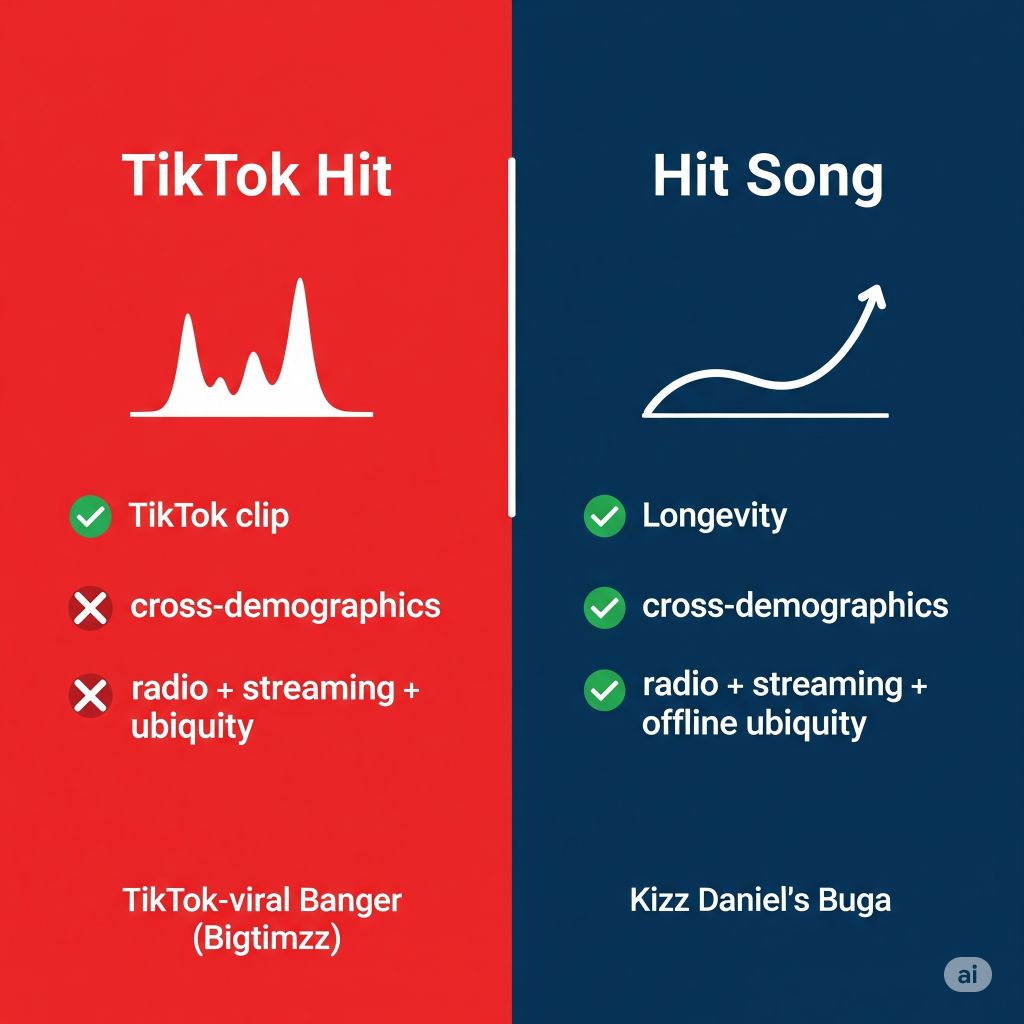
A song that’s viral on TikTok might not exactly be popular outside TikTok or even other streaming platforms. Take Banger by Bigtimzz, a certified TikTok hit with over 400,000 streams on the platform and its own viral dance challenge, which has translated into 3 million streams on Spotify. Yet outside that catchy 30-second hook, the song can barely be recognized. Or a record like Dwin, The Stoic’s I Go Nowhere, which can be classified as a hit within his niche fanbase but remains largely unknown in the mainstream, on radio, or even TikTok.
In today’s numbers-driven music landscape, it’s easy for people to certify records with high streaming numbers as hit songs even though these records lack the cultural penetration and impact that characterize hit songs. They also sidestep the fact that these numbers are realized from streaming activity across countries and continents.
Most of the figures fans are privy to usually culminate from a global pool, combining streams from dozens of countries. Even though a song’s presence might be minimal in these different regions, the total streams present a misleading picture of mass appeal. For example, If a song is streamed 1 million times in 20 countries, that’s 20 million streams. On the surface, that looks like a blockbuster single. In reality, those streams are scattered.
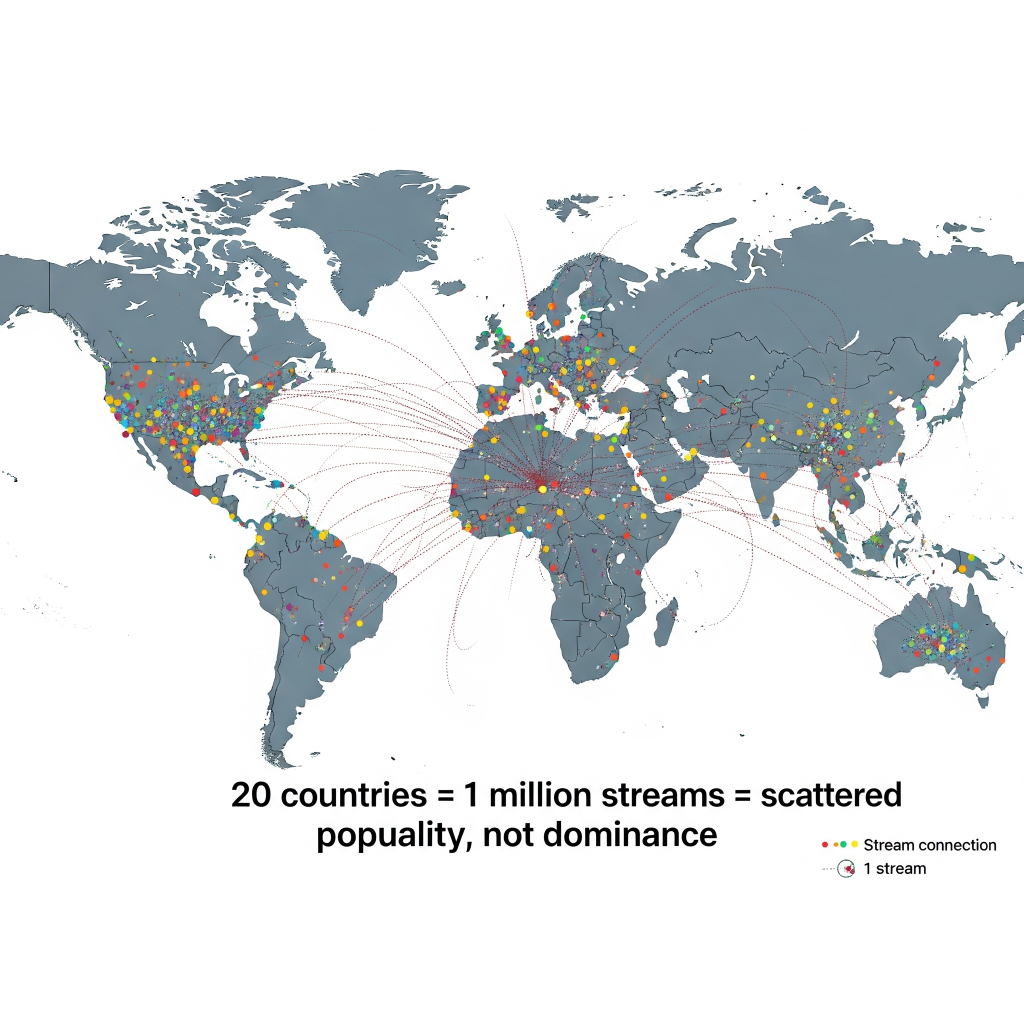
One million streams across different countries means the song is enjoying listenership within a small or specific demographic in those regions, not that it’s a huge record. Without concentrated cultural impact in one market, those streams represent the artist’s reach, not dominance.
And reach, it should be noted, doesn’t happen in a vacuum, it’s often shaped by factors beyond the music itself. Artist reach is usually influenced by factors such as the artist’s superstar status, marketing budget, heavy playlisting, and algorithmic push, to mention a few. It is also important to note that in a music landscape where stream farming and artificial inflation of streams are now commonplace, the number of streams on a record is probably the most unreliable indication of a song’s hit status in 2025.
So what’s the definition of a hit song in 2025?

In this writer’s opinion, for a song to be certified a hit in 2025, the record has to have cultural impact, staying power. It also needs to have mass popularity across all fragments of the industry, which include the artist’s fanbase, radio, social media, TikTok, and streaming platforms. Even though listener consumption habits, music discoverability, and accessibility have evolved over time, the criteria used to determine a hit song have remained the same. Albeit with some adjustments to reflect the current ecosystem.
What separates a viral or popular song from a hit song is depth and reach. A popular song can be everywhere for one month, but a hit song remains in the public consciousness for six months or even longer, cutting across demographics and outlasting the hype cycle.
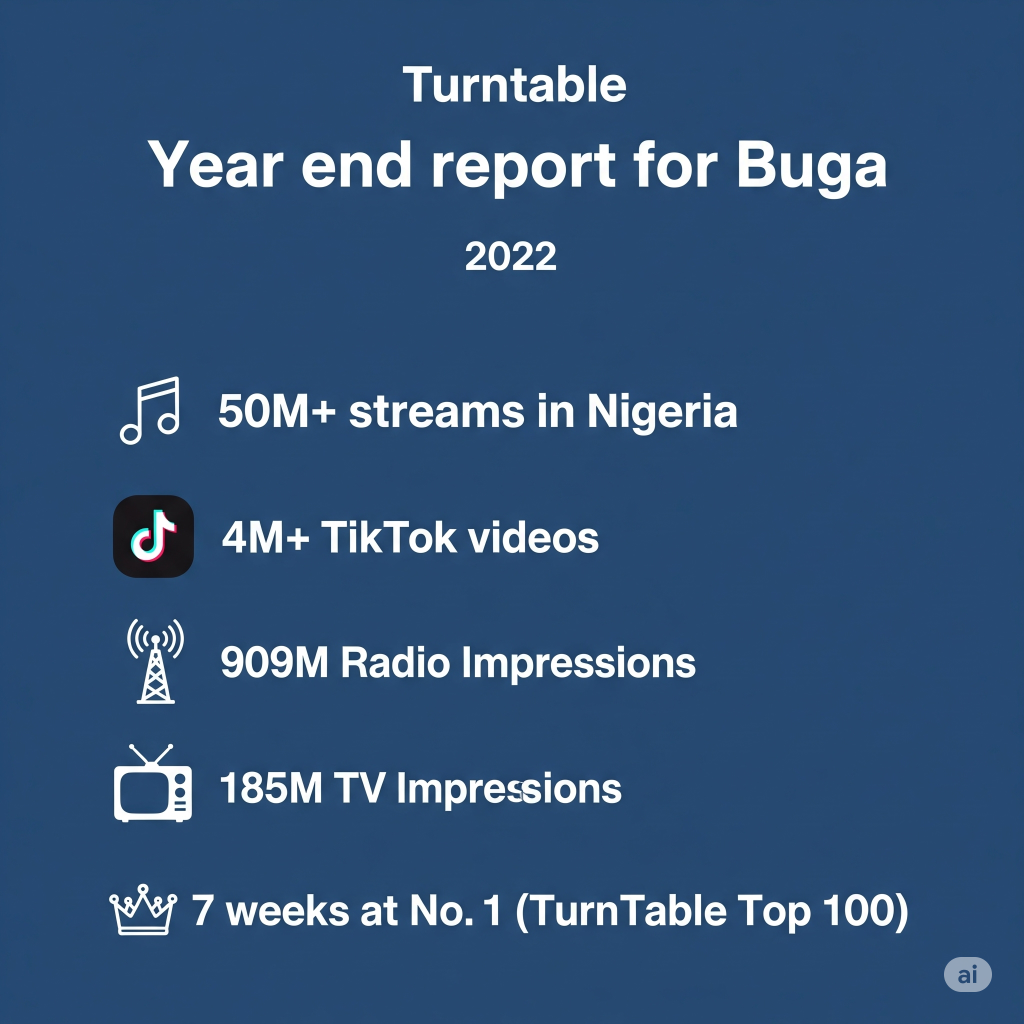
In the last five years, Kizz Daniel’s Buga stands as the best example of what a hit song is in Nigeria’s current music climate. In 2022—the year the record was released—it amassed over 50 million streams across all DSPs in Nigeria and was used in over 4 million videos on TikTok, sparking a viral dance craze. The song also received 909 million radio impressions and 185 million TV impressions, and spent seven weeks at No. 1 on the Turntable Official Nigeria Top 100 chart, which aggregates data from all digital streaming platforms as well as radio and TV stations across the country.
Not only did the record perform phenomenally well digitally, it stayed on people’s lips, cutting across different age demographics and enjoying widespread acceptance in Nigerian homes and even churches.
https://vt.tiktok.com/ZSSTWGquo
https://www.facebook.com/share/v/16wgfAeTdR/
So, what’s the definition of a hit song in 2025? It’s any record that captures the culture, dominates conversations, and refuses to go away, whether you love it or not.

